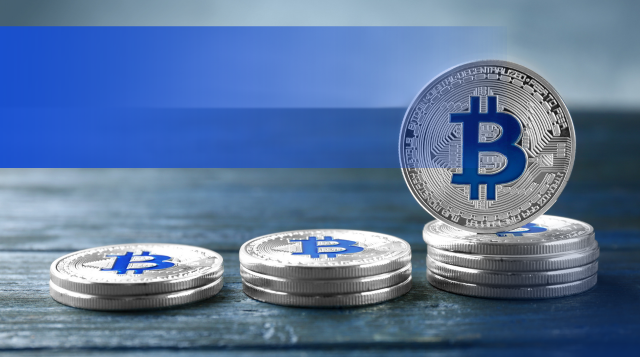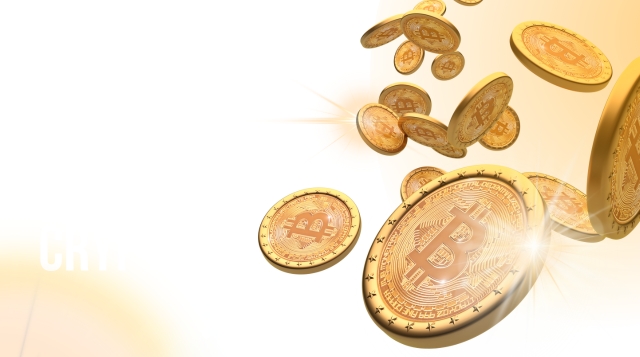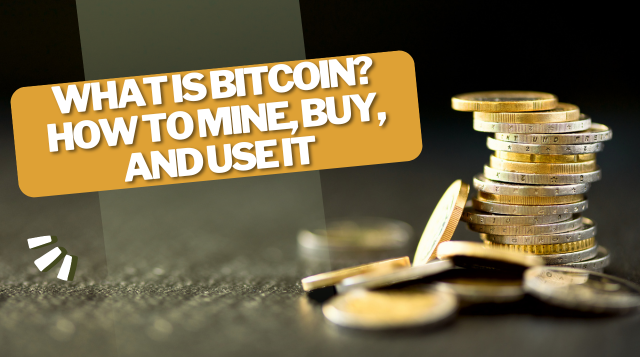What Is Bitcoin – How to Mine, Buy, and Use It
What is Bitcoin:- Bitcoin (BTC) is a cryptocurrency, a virtual money that can be used to make and receive payments without being controlled by any one person, organisation, or other organisation. This eliminates the need for third parties to get involved in financial transactions. It may be acquired on a number of exchanges and is given to blockchain miners as payment for validating transactions.
Under the pseudonym Satoshi Nakamoto, a group of mysterious engineers unveiled Bitcoin to the world in 2009.
Since then, it has grown to be the most well-known cryptocurrency globally. Numerous additional cryptocurrencies have been developed as a result of its popularity. These rivals are employed as utility or security tokens in other blockchains and cutting-edge financial systems, or they try to take its position as a payment method.
Find out more about the cryptocurrency that began it all, including its origins, functions, acquisition methods, and applications.
Launched in 2009, Bitcoin is the world’s largest cryptocurrency by market capitalization.
Unlike fiat currency, Bitcoin is created, distributed, traded, and stored using a decentralized ledger system known as a blockchain.
Bitcoin and its ledger are secured by proof-of-work (PoW) consensus, which also secures the system and verifies transactions.
Bitcoin can be purchased via various cryptocurrency exchanges.
Bitcoin’s history as a store of value has been turbulent; it has undergone several boom and bust cycles over its relatively short lifespan.

Understanding Bitcoin
The domain name Bitcoin.org was registered in August of 2008. This domain is WhoisGuard Protected, at least as of right now, which means that the identity of the person who registered it is private.
Announcement
Under the fictitious moniker Satoshi Nakamoto, an individual or group said to the metzdowd.com cryptography mailing list in October 2008, “I’ve been working on a new electronic cash system that’s fully peer-to-peer, with no trusted third party.” The now-famous white paper “Bitcoin: A Peer-to-Peer Electronic Cash System,” which was posted on Bitcoin.org, would serve as the foundation for how Bitcoin functions today.
First Block
The first Bitcoin block, Block 0, was mined on January 3, 2009. This is sometimes referred to be the “genesis block” since it has the phrase “The Times 03/Jan/2009 Chancellor on brink of second bailout for banks,” which may indicate that the block was mined on or beyond that date.
Rewards
Every 210,000 blocks, Bitcoin incentives are cut in half. In 2009, for instance, the block reward was fifty more bitcoins. The reward for each block discovery was reduced to 6.25 bitcoins on May 11, 2020, following the third halving, which is anticipated to take place sometime in 2024 and raise the reward to 3.125 bitcoins.
Denominations
A satoshi is the smallest unit of one bitcoin, which is divisible to eight decimal places (i.e., 100 millionths of one bitcoin). One day, Bitcoin could be divided to even more decimal places if required and approved by the involved miners.
Bitcoin’s Blockchain Technology
It’s not too difficult to comprehend Bitcoin as a digital money. If you possess bitcoins, for instance, you may transfer smaller amounts of those bitcoins to pay for products or services using your cryptocurrency wallet. That gets rather complicated, though, when you try to figure out how it operates.
Also Read:- What is CrowdStrike – CrowdStrike
Blockchain
Part of a blockchain and the network that powers it are cryptocurrencies. A distributed ledger, or shared database, is what a blockchain is. Encryption techniques are used to safeguard data on the blockchain.
On the blockchain, when a transaction occurs, data from the previous block is transferred to a new block with the updated data, encrypted, and the transaction is confirmed by network validators, or miners. Once a transaction is confirmed, a new block is formed, and the miner(s) who validated the data in the block receive a reward in the form of Bitcoin, which they can use, keep, or sell.
Transactions are deposited into a queue so that network miners can verify them. The Bitcoin blockchain network’s miners make simultaneous attempts to validate the same transaction. The nonce, a four-byte number contained in the block header, is solved for by the mining gear and software.
A miner continuously hashes, or randomly regenerates, the block header until it reaches a target number that the blockchain specifies. After the block header is “solved,” a new block is made so that additional transactions may be confirmed and encrypted.
Encryption
Bitcoin encrypts the data kept in the blockchain’s blocks using the SHA-256 hashing algorithm. To put it simply, a 256-bit hexadecimal integer is encrypted with transaction data that is kept in blocks. All the transaction information and data associated with the blocks that came before that block are contained in that number.
How to Mine Bitcoin
Bitcoin may be mined using a range of hardware and software combinations. When Bitcoin was initially published, miners could compete to solve the hash on a single computer; but, as the network grew in popularity, more miners joined, decreasing the likelihood of being the one to solve the puzzle. If your computer has more recent technology, you can still utilise it as a miner, but your odds of solving a hash on your own are quite slim.
This is due to the fact that you’re up against a network of miners that produce around 444 quintillion hashes (444 exa hashes) each second, or random number production. Known as Application Specific Integrated Circuits (ASICs), these devices are designed with mining in mind and are capable of producing up to 335 trillion hashes per second. A machine with the newest hardware, on the other hand, hashes about 100 megahashes (or 100 million) every second.
In order to mine Bitcoins successfully, you have a few choices. You may join a mining pool and use Bitcoin-compatible mining software on your current PC. In order to compete with massive ASIC mining farms, mining pools are collections of miners that pool their computing power.
An ASIC miner is an additional option if you have the money. A new one would usually set you back about $10,000, but as miners improve their systems, they also sell older ones. Buying one or more ASICs will come with some substantial expenditures, such cooling and power.
There are several pools you may join and a variety of mining programmes to select from. The two most popular ones are BFGMiner and CGMiner. It’s crucial to research a pool’s payout structure, potential costs, and feedback from previous users before selecting one.

How Do You Buy Bitcoin?
It is possible to purchase bitcoin using a cryptocurrency exchange if you would rather not mine it. Due to its high cost, most individuals won’t be able to acquire Bitcoin in its whole, but you may buy smaller amounts of Bitcoin on these exchanges using fiat money like US dollars. For instance, by opening and financing an account on Coinbase, you may purchase a bitcoin. Your bank account, credit card, or debit card can all be used to finance your account. Watch the video below for additional information on purchasing bitcoin.
How Is Bitcoin Used?
Initially, Bitcoin was intended to be used as a peer-to-peer payment system. But because of its rising value and competition from other blockchains and cryptocurrencies, its use cases are expanding.
Payment
You need to have a cryptocurrency wallet in order to utilise your Bitcoin. Wallets serve as your interface with the blockchain and are capable of storing your bitcoin’s private keys, which you need to enter in order to complete a transaction. Many businesses, shops, and stores accept Bitcoin as payment for products and services.
The phrase “Bitcoin Accepted Here” is typically shown on signs outside of physical businesses that take cryptocurrencies. Transactions may be completed via touchscreen applications and QR codes, as well as the necessary hardware terminal or wallet address. Bitcoin is a simple payment option to add to an online business’s existing selection of online payment methods, such as PayPal, credit cards, and so forth.
Investing and Speculating
As Bitcoin gained popularity, traders and investors started to show interest in it. Exchanges for cryptocurrencies that allowed people to buy and sell bitcoins arose between 2009 and 2017. Demand increased gradually as prices rose, and in 2017 the price broke $1,000. Many started purchasing Bitcoins to hoard because they thought the price would keep rising. The market took off when traders started making short-term deals utilising bitcoin exchanges.
The price of Bitcoin plummeted in 2022. It peaked in March 2022 at $47,454 and dropped to $15,731 by November 2022. After that, it bounced back in 2023, reaching a high of $31,474 before falling below $30,000 once more. Following a decline in other assets, Bitcoin saw a decline as a result of broader market turbulence brought on by increasing interest rates, inflation, Covid supply chain problems, and the conflict in Ukraine. Concerns over the stability of digital currencies have also been raised by the significant token crashes in the cryptocurrency space, as well as the failure of a significant exchange.
Risks of Investing in Bitcoin
Due to its recent sharp price increase, Bitcoin has attracted the attention of speculative investors. On December 31, 2019, the price of bitcoin was $7,167.52. A year later, it had increased by more than 300% to $28,984.98. It kept rising during the first half of 2021, reaching a record high of $68,990 in November of that year. Over the following several months, it steadily declined to hover around $40,000. Its price continues to swing significantly, as previously noted.
Therefore, rather than using Bitcoin as a means of trade, many people buy it for its investment potential. However, there are a number of inherent hazards associated with its acquisition and use due to its digital form and lack of guaranteed value. For instance, the Consumer Financial Protection Bureau (CFPB), the Financial Industry Regulatory Authority (FINRA), and the Securities and Exchange Commission (SEC) have all released many investor advisories on Bitcoin investment.
Read More:- Putting crypto’s 2023 bull run in perspective

आप सभी का आपकी अपनी वेबसाइट businessplanhindi.in में स्वागत है मुझे बिज़नेस, पढाई, और जनरल नॉलेज के बारे में पढ़ना और उसकी जानकारी देना बहुत पसंद है इसी लिए मैंने ये वेबसाइट बनायीं है आप सभी अपना प्यार इस पर बनाये रखे धन्यवाद

One thought on “What Is Bitcoin – How to Mine, Buy, and Use It”